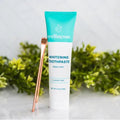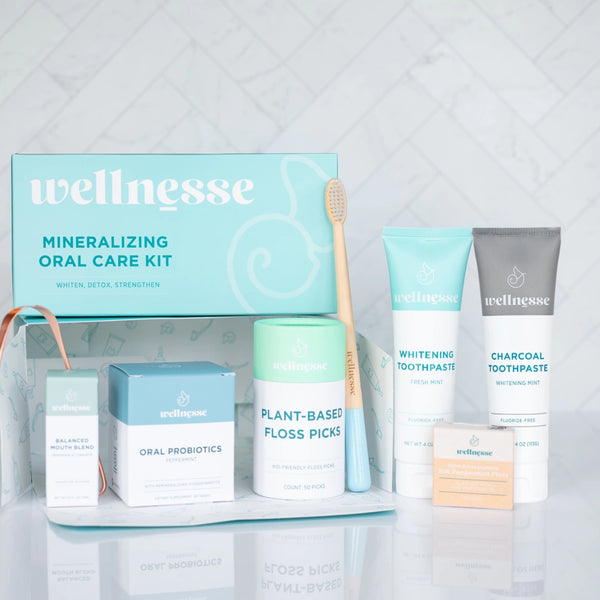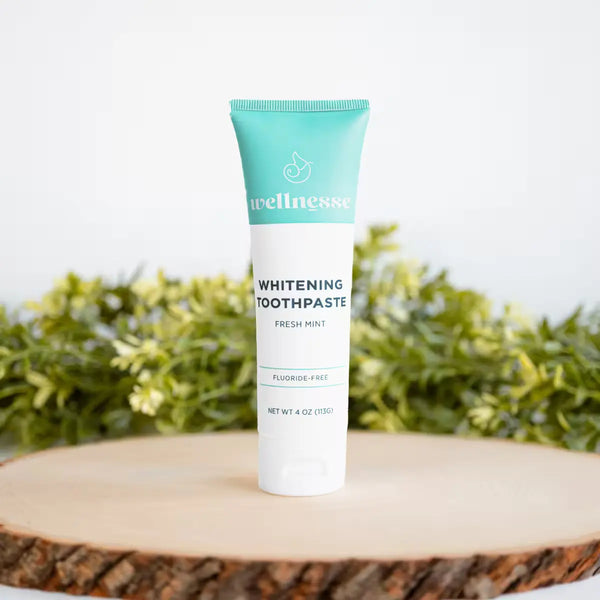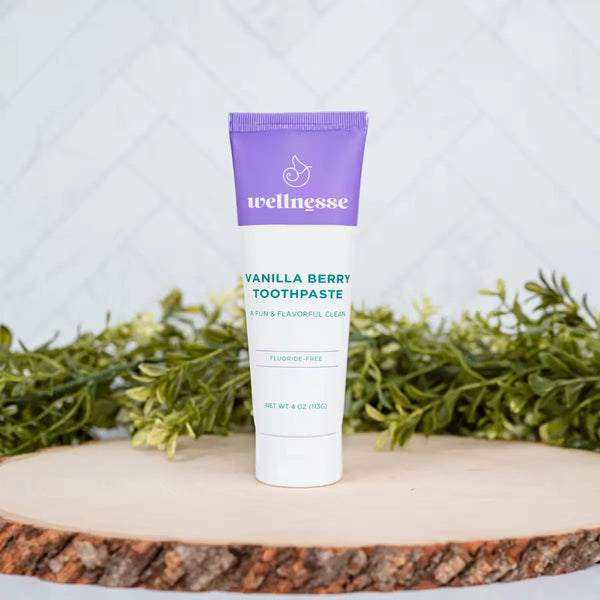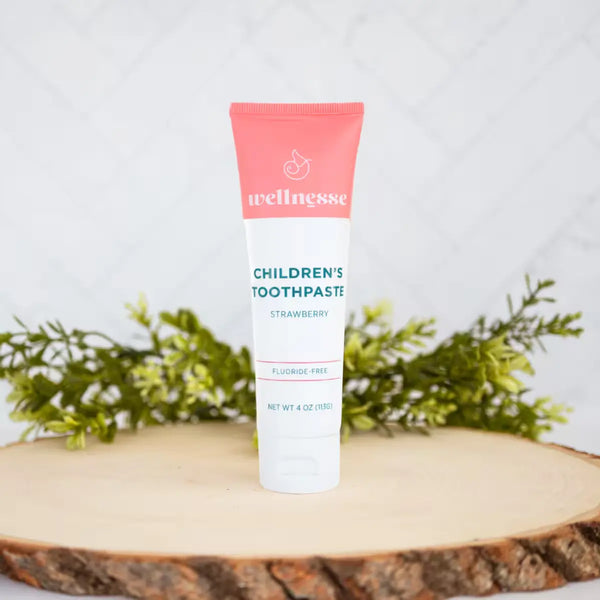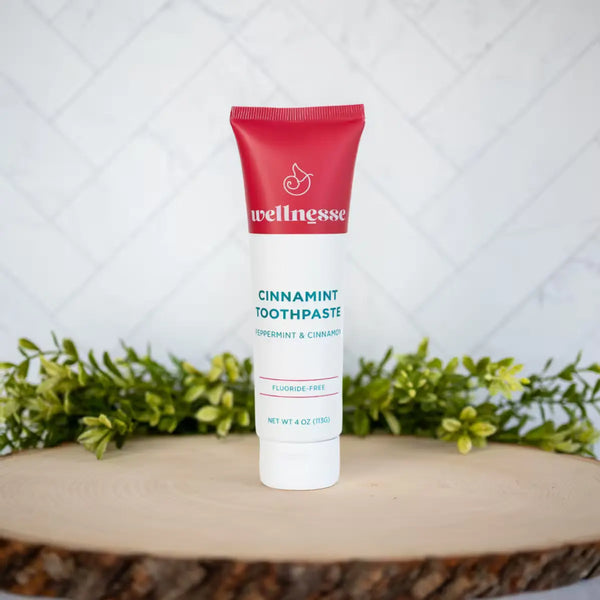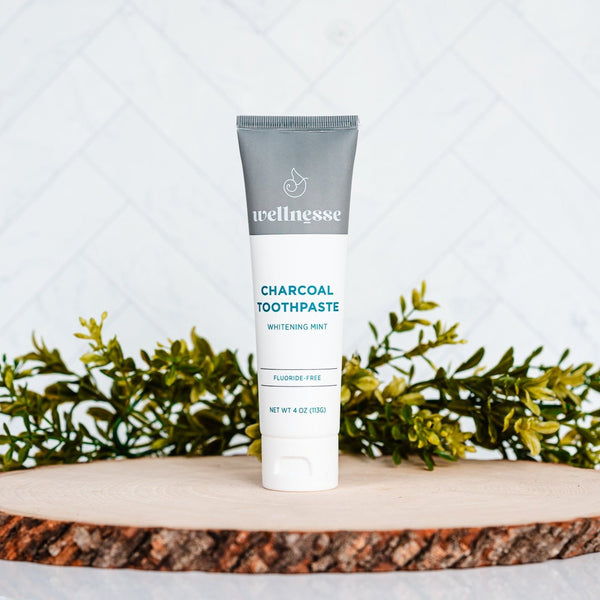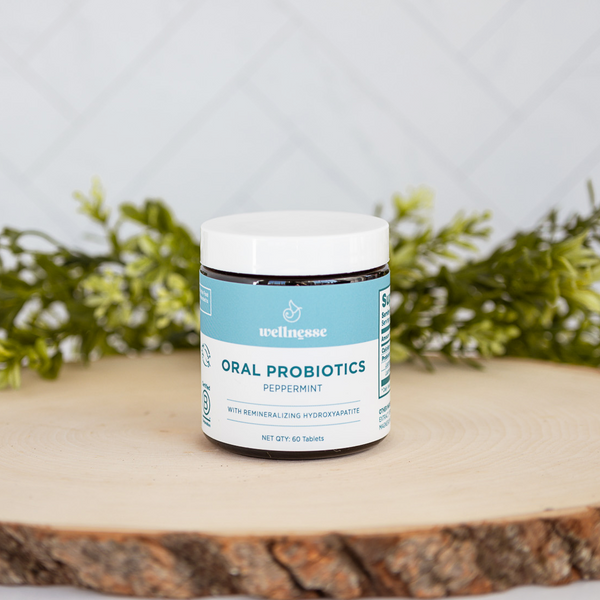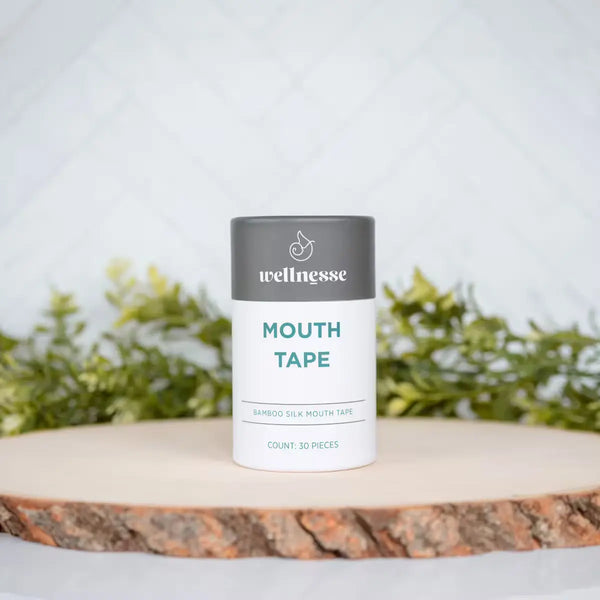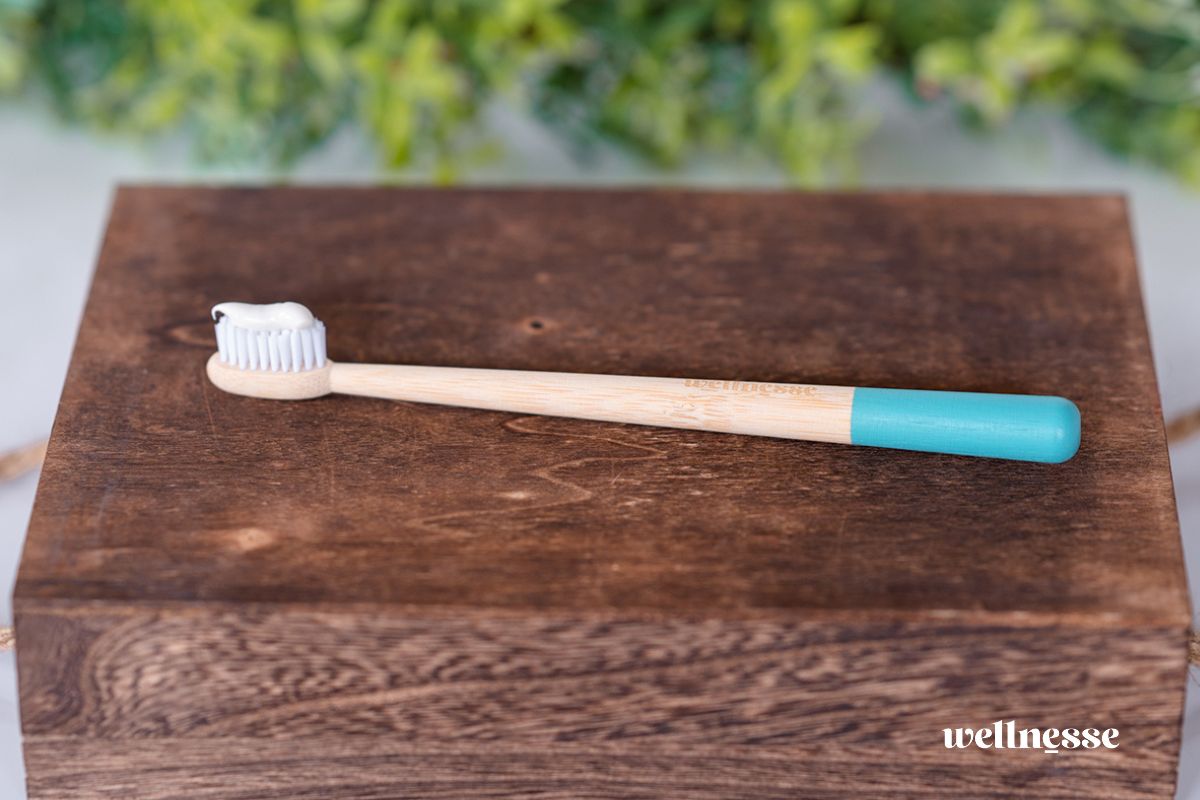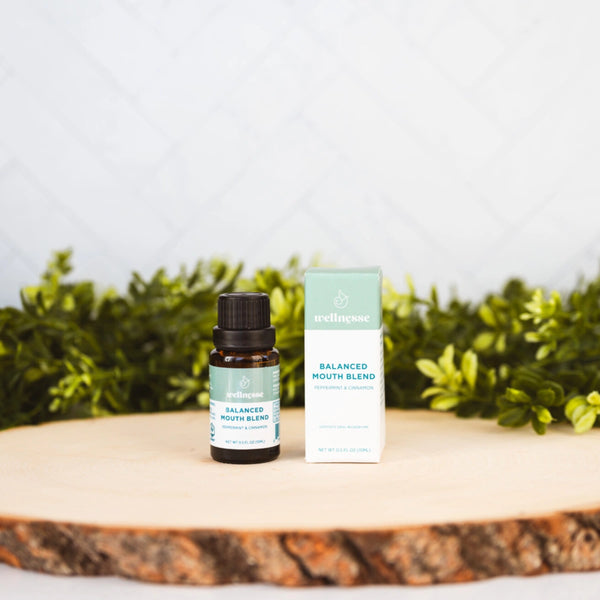Today, we’re diving into one of our favorite topics: our hydroxyapatite toothpaste (HAp toothpaste)!
Hydroxyapatite burst into the natural oral care scene as a clean, powerful fluoride alternative.
But what is hydroxyapatite? And after so many years of fluoride being the oral care holy grail, why would we need an alternative? What does hydroxyapatite do anyway?
Keep reading to find out!
Ready for a brighter, whiter, happier smile? Shop our family-favorite Whitening Toothpaste with hydroxyapatite, neem oil, and aloe vera!
What Is Hydroxyapatite?
Hydroxyapatite is a mineral that naturally occurs in a few sources, most notably as a primary component of human bones and teeth. Hydroxyapatite is composed mainly of calcium and phosphate (it’s also referred to as a ‘calcium phosphate mineral’) and fills in cracks on the tooth surface to lend strength and rigidity. This process helps to reverse demineralization. Its natural occurrence in teeth makes it a ‘biocompatible’ tool for strengthening and reinforcing teeth, specifically tooth enamel.
The ability to source hydroxyapatite naturally and its biocompatibility with teeth make it one of the most beneficial oral health ingredients. After all, what better treatment could there be for weakened or damaged teeth than the very same mineral they’re made of?
However, even among ‘natural’ dental care brands, some disagree over what type of hydroxyapatite is best for toothpaste. For the most part, it comes down to two options: Nano or Micro.
Nano-Hydroxyapatite vs. Micro-Hydroxyapatite
Many natural toothpaste brands use hydroxyapatite, and most contain either nano-hydroxyapatite (n-ha) or micro-hydroxyapatite. The primary difference between the two is in the names: Nano-hydroxyapatite contains nanoparticles (which are smaller), and micro-hydroxyapatite contains microparticles (which are larger).
People frequently assume that nano-hydroxyapatite toothpaste is the better choice because they think smaller particles must mean better absorption. However, microparticles are more than small enough to fit into the cracks and crevices of the teeth, and they come with one significant advantage: Micro-hydroxyapatite can be sourced entirely naturally, while nano-hydroxyapatite can only be sourced synthetically.
In other words, choosing nanoparticles would require us to base our toothpaste recipe on a synthetic ingredient.
And when it comes to your family’s health, that’s a risk we refuse to take. We create every Wellnesse product with the cleanest, safest, most effective natural ingredients available, and our toothpaste is no exception.
Our rigorous testing and 5-star customer reviews confirm that our micro-hydroxyapatite is more than small enough to absorb into and rebuild the teeth - no synthetic additives or processing necessary!
Hydroxyapatite vs. Fluoride
As mentioned earlier, many people are confused when discussing a ‘fluoride alternative.’ Why would we need an alternative to the ingredient dental health professionals have used for decades? These days, you can find fluoride in nearly every conventional oral hygiene product: toothpaste, mouthwash, and even floss!
In the ongoing fluoride debate, some people will argue that, like hydroxyapatite, fluoride is a naturally occurring compound. While it’s true that a natural version of fluoride exists, the type of fluoride often added to water supplies and other fluoridated products is synthetic. In fact, the version frequently used to fluoridate water is an industrial byproduct.
While fluoride is widely used to strengthen teeth, studies have established links between fluoride exposure and skeletal fluorosis. This bone condition causes thickening and hardening of the tissue.
Fluoride is an established neurotoxin linked to reduced mental capacity and even decreased IQ. Additionally, there is growing concern that there may be links between fluoride and cancer, male infertility, and premature sexual development.
At Wellnesse, we consider any risk to your health too much of a threat, especially when it’s completely unnecessary! Not only is hydroxyapatite proven to strengthen and support the teeth, but it does it without any synthetic additives or side effects! Plus, research comparing hydroxyapatite and fluoride established that fluoride provided no more benefits to test subjects than hydroxyapatite.
Our Hydroxyapatite Toothpaste
Our glycerin-free, fluoride-free toothpaste is our first Wellnesse product and our best-selling Wellnesse product - for good reason!
Katie, our co-founder, spent years perfecting a powerful formula that uses nothing but the best ingredients nature has to offer to whiten, freshen, and remineralize enamel. Unlike other natural toothpaste brands, we didn’t just remove the toxins; we replaced them with clean, potent ingredients that are even more effective. We tested, reformulated, and perfected our recipe until we had the perfect combination to protect your teeth and your oral microbiome!
Say goodbye to toxic ingredients and natural products that don’t work. Upgrade your oral care routine today, starting with your new favorite hydroxyapatite toothpaste!
Resources
(2023, July 18). Caries-Preventing Effect of a Hydroxyapatite-Toothpaste in Adults: A 18-month Double-Blinded Randomized Clinical Trial.
https://www.frontiersin.org/articles/10.3389/fpubh.2023.1199728/full
Wells, K. (2020, June 12). Benefits of Hydroxyapatite For Teeth and More. Wellness Mama.
https://wellnessmama.com/427859/hydroxyapatite/
Wells, K. (2019, December 7). How to Remineralize Teeth Naturally & Reverse Tooth Decay. Wellness Mama.
https://wellnessmama.com/3650/remineralize-teeth/
Wells, K. (2021, May 29). Is Fluoride Bad for You? Effects for Thyroid & Body. Wellness Mama. https://wellnessmama.com/health/fluoride/
